
Browse an alphabetical list of photographs. These historical images portray people, places, and events before, during, and after World War II and the Holocaust.
<< Previous | Displaying results 961-970 of 2641 for "Photo" | Next >>
Forced laborers build the south wall of the foundation of the new Dachau satellite camp of Weingut I in Mühldorf . Germany, 1944.
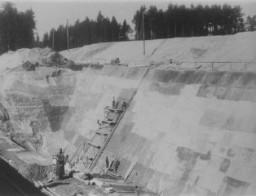
With bowls in hand, conscripts of a Jewish Hungarian labor unit wait for food. Abony, Hungary, 1940.
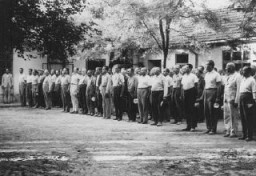
Forced-labor camp for Roma (Gypsies). Lety, Czechoslovakia, wartime.

Fleeing the advance of the Soviet army, the Germans forcibly evacuated westward by barge these prisoners of the Stutthof concentration camp. Near Danzig, January 1945.
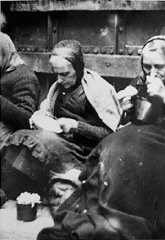
Jewish homes in flames after the Nazis set residential buildings on fire in an effort to force Jews out of hiding during the Warsaw ghetto uprising. Poland, April 19–May 16, 1943.
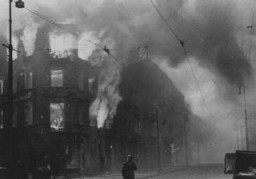
Foreign Jews arrested in Paris at the Austerlitz train station before deportation to the French-administered internment camps Pithiviers and Beaune-la-Rolande in the Loire region. Paris, France, ca. May 1941.
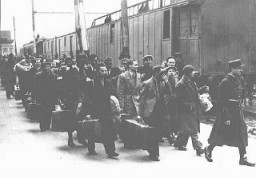
A group of foreign-born Jews poses for a photo in Gurs, a French internment camp in southwestern France. Gurs, France, 1941. Samuel Liebermensch is pictured at the center. Hugo Mayer is seated on the lower right. Siegfried Lindheimer is pictured in the first row , second from the left.
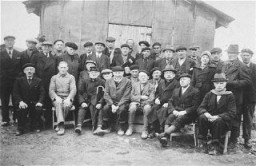
Judge Thomas Buergenthal, formal portrait for the International Court of Justice in the Hague. ca. 2003.
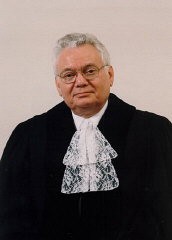
Postwar photograph of gas chamber for mass murder in the Auschwitz main camp. Poland, ca. 1947. In mid-August 1940, Auschwitz concentration camp authorities put into operation a crematorium adjacent to a morgue. This building was located just outside the boundaries of the Auschwitz main camp. In September 1941, the morgue was converted to a gas chamber for mass murder where several hundred people could be killed at a time. This gas chamber was used until December 1942, though the crematorium remained…
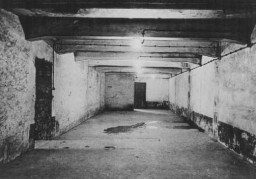
Former prisoners of the "little camp" in Buchenwald stare out from the wooden bunks in which they slept three to a "bed." Elie Wiesel is pictured in the second row of bunks, seventh from the left, next to the vertical beam. Abraham Hipler is pictured in the second row, fourth from the left. The man on the third bunk from the bottom, third from the left, is Ignacz (Isaac) Berkovicz. [He has also been identified as Abraham Baruch.] Michael Nikolas Gruner, originally from Hungary, is pictured on the bottom…
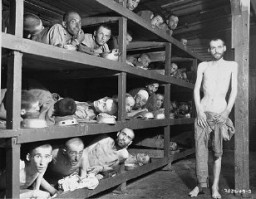
We would like to thank Crown Family Philanthropies, Abe and Ida Cooper Foundation, the Claims Conference, EVZ, and BMF for supporting the ongoing work to create content and resources for the Holocaust Encyclopedia. View the list of donor acknowledgement.